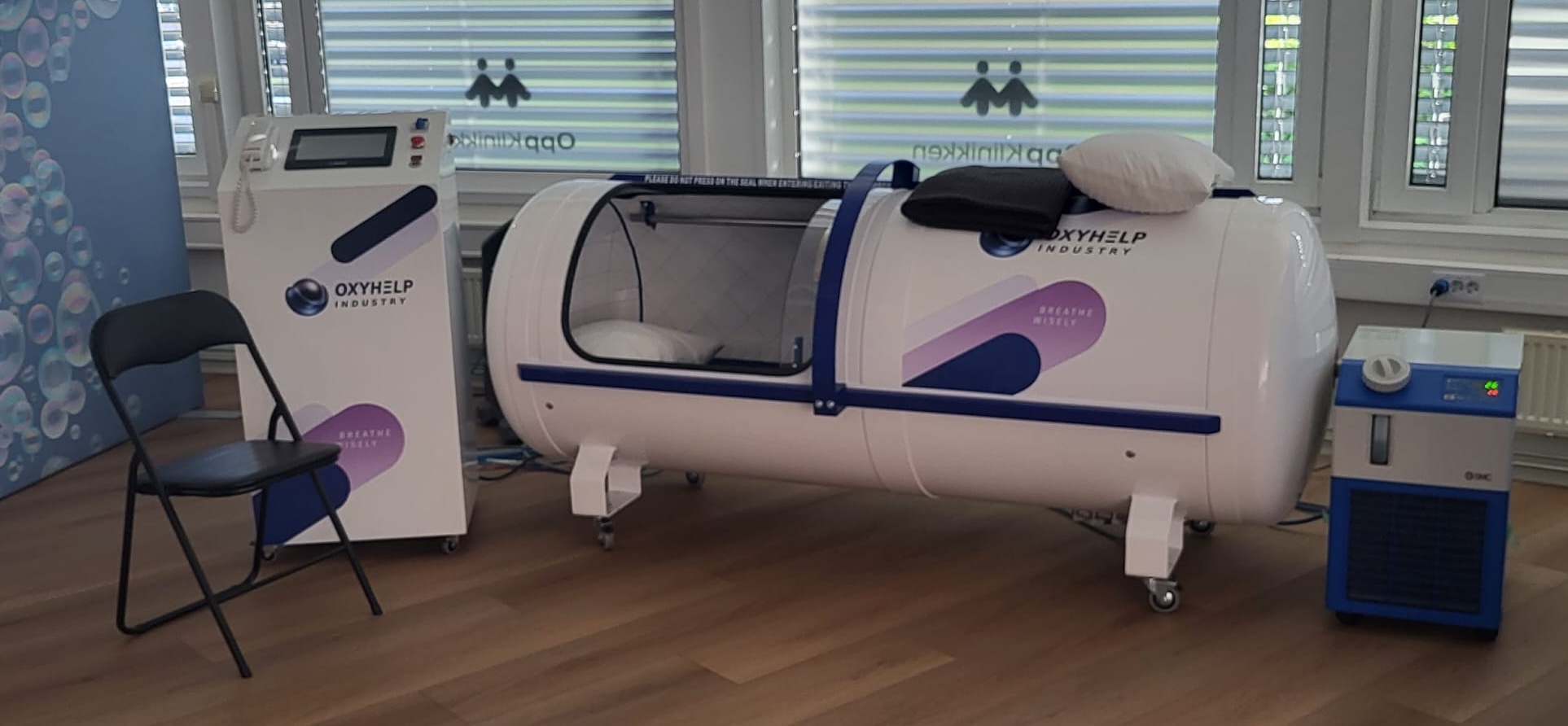Hyperbaric oksygen therapy
Treatment in a pressure chamber helps many
Excerpt from text: ANDERS NORDBY, SUPERVISOR IN ANESTHESIA AND ASS. SECTION HEAD, DEPARTMENT OF ANESTHESIOLOGY, OSLO UNIVERSITY HOSPITAL.
Pressure chamber
In the technical language, pressure chamber treatment is called hyperbaric oxygen treatment. The treatment involves increasing the ambient pressure around the whole body and at the same time the patients breathe in pure oxygen from a mask. There are a number of different conditions that can be treated. This is the primary treatment for decompression sickness and gas embolism.

There are many seriously ill intensive care patients who have fully recovered. A patient, who received cardiac arrest and was completely paralyzed in half of the body recovered completely after the treatment.
Anders Nordby
What happens
The combination of pressure and oxygen causes the oxygen to be absorbed into the bloodstream and transported around to the whole body to a much greater extent than usual. The amount of oxygen in the body becomes so large that one can in principle live completely without blood inside the pressure chamber.
High amounts of oxygen in the blood helps the body's white blood cells to kill bacteria.
If you have oxygen-poor tissue in your body, the pressure treatment can form new blood vessels, and it also makes wounds heal faster.
Which treatments can be treated in a pressure chamber?
Pressure chambers are standard treatment for decompression sickness and gas embolism (gas bubbles in bloodstream). These are conditions where it is urgent to get to chamber treatment.
In a number of conditions the treatment can be an addition to other treatment. These can be conditions such as CO2 poisoning, crushing injuries, life-threatening infections, life-threatening blood loss, infected implants, preventing calcification, chronic wounds, hearing loss, blood clot in the blood vessel to the eye, fatigue, and more.
It is fantastic to see that, for example, divers come in with major paralysis and stay completely healthy after treatment.
Anders Nordby
We follow international recommendations for what should be processed in a pressure chamber. Changes in treatment indications may therefore occur.
In the chamber, patients can listen to the radio or read books and magazines. The pressure chamber has also large screens where we show TV programs or films. It is also possible to bring along your own reading material and films.
Security in the chamber
The increased pressure in the chamber together with the oxygen from the masks increases the risk of fire in the pressure chamber. Therefore, there are very strict rules for what you can bring. It absolutely is forbidden to bring matches, lighters, batteries and electronics or the like into the pressure chamber room. Shoes are also not allowed inside the chamber.
What are the side effects of the treatment?
There are very few side effects of hyperbaric oxygen therapy. Some may experience problems to equalize the pressure in the ears, especially if you have a cold. After a few treatments patients get used to equalizing the pressure.
Treatment duration
Most scheduled treatments last approximately one to one and a half hours. By instant help, the length of treatment varies considerably.
The number of treatments depends on the diagnosis and how the response is to the treatment.
A clinical study is now underway at the University in Oslo with patients who are amputees. The goal is to see if pressure tank treatment can make the amputation stump heal better and that the patients do not have to re-amputate as often as is the case for a great many of the patients as of today.
In an article in www.vi.no, it is shown that hyperbaric oxygen treatment has very good results with radiation damage after cancer treatment.